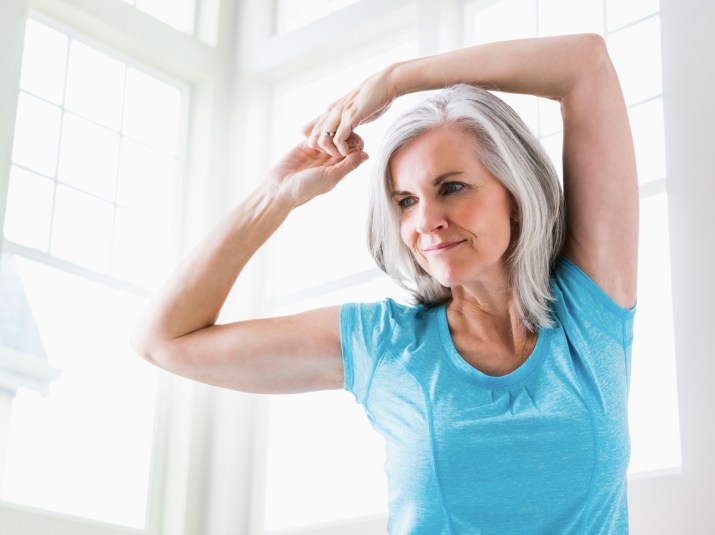How to Ward Off Muscle Loss and Saggy Skin as You Age, According to Experts

As much as we hate to admit it, most of our bodies start to sag as we get older. Skin that used to sit perfectly taut on arms, back, legs, and, well, pretty much everywhere else suddenly seems to decide it would rather inch closer to the floor. For those over 50, that can be caused by something called sarcopenia, which is the decline of skeletal muscle tissue. Apart from just being aesthetically annoying, the condition can lead to an increased risk of falls, fractures, and a generally poorer quality of life, according to a 2018 study from Clinics in Geriatric Medicine.
Although the condition may seem inevitable, it’s actually something that can be prevented and even reversed with some shifts in diet and exercise. Of course, you shouldn’t go drastically changing how you eat or work out without consulting your doctor first. However, you can keep reading if you want to learn what you might have in store before your appointment.
How to Treat and Prevent Sarcopenia
First, the Clinics in Geriatric Medicine study recommends incorporating higher levels of protein and vitamin D to help strengthen muscles. That can mean adding as much as 25 to 30 grams of high quality protein per meal. Think of food like tuna, cottage cheese, or a smoothie with protein powder to help give you an ample boost. Tuna will also provide vitamin D, or you can talk with your doctor about adding a supplement to your daily routine.
As for exercise, the Annual Review of Gerontology and Geriatrics shared a study in 2017 that suggests adding progressive resistance exercise to your workout to help manage and prevent sarcopenia. The study also included example exercises for the major muscle groups:
- Chest: Flat chest press, chest flyes, incline or decline chest press, pushups
- Back: Pull downs or seated cable rows, chest supported rows, pull-ups, shrugs
- Arms: Seated curls, hammer or preacher curls, triceps extension, bent over triceps extension “kick backs”
- Shoulders: Overhead press, upright rows, lateral raises, rear deltoid rows/flyes
- Upper legs: Leg press, leg extensions, lunges, machine squat
- Lower legs: Standing calf raises, seated calf raises
You can find examples of those and other progressive resistance exercises on Study.com. Older loved ones who may already be experiencing more prolonged symptoms of sarcopenia can also benefit from adding these exercise and diet aspects to their lives. As the Current Opinion in Rheumatology wrote in 2014, “Results of clinical intervention studies in even the oldest and frailest nursing home residents have demonstrated significant functional improvement through a combination of nutrition and resistance exercise.” Again, you should go over the exercises with your doctor or trained health professional before jumping right in at the gym. If you’re given the go-ahead, you will be well on your way to making sure your muscles aren’t dropping down toward the ground.
More From Woman’s World
10 Hilariously Relatable Moments That Will Make You Think ‘Yup, I’m Getting Old’
Maple Leaf Extracts Might Unlock the Secrets to Wrinkle-Free Skin, Research Suggests
Revitalize Your Skin With the 14 Best Face Masks for Women Over 50












